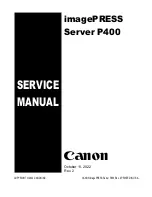
Volumes
56
SnapServer Administrator Guide
Volumes
Volumes are created, viewed, edited, and deleted from the
Storage > Volumes
screen
of the Administration Tool. The default volume organizes the SnapServer’s storage
capacity into a single volume with a single file system. If you need separate file
systems on the same server, you can delete the default volume and create two or
more smaller volumes in its place. Consider the following facts and guidelines
when planning your new volume configuration.
Volumes and the Snapshot Pool
The default disk and RAID capacity is divided between the file system (80 percent)
and the space left available for future snapshot use (20 percent). You may need to
adjust this figure depending on your snapshot strategy or expand the volume to all
available space if you plan never to use snapshots. Keep in mind that you can
increase or decrease snapshot pool size at any time, but volume space can only be
increased. For more information, see “Estimating Snapshot Pool Requirements” on
Note
GuardianOS snapshots should not be used on volumes that contain iSCSI
disks. If a volume will contain one or more iSCSI disks, decrease the Snapshot pool
size to zero. For information about creating snapshots of iSCSI disks, see
“Configuring VSS/VDS for iSCSI Disks” on page 93.
Deleting Volumes
Deleting volumes may move or disable certain third party applications that are
installed on the user volume space.
The NetVault for GuardianOS Database Directory (NVDB), containing files that
keep track of the data you back up; the antivirus software; and Snap EDR reside on
the default volume. If you delete the default volume, these components will also be
deleted unless there is available space on additional volumes (e.g., on expansion
arrays).
To retain NVDB information, you must back up the NVDB directory (see page 120)
before you delete the volume, create your new storage configuration, and then
restore the directory.
After creating your new storage configuration, you can reinstall the antivirus
software by navigating to the
Snap Extensions
screen and selecting
CA Antivirus
. On
the next screen, check the
Enable
check box and click
OK
. The SnapServer reinstalls
the antivirus software (using default settings) on the volume with the most
available space. However, the installation process does not preserve custom
antivirus configuration settings, so make a note of any such settings before deleting
Summary of Contents for 5325301507 - Snap Server 4400 NAS
Page 2: ......
Page 12: ...xii SnapServer Administrator Guide ...
Page 16: ...xvi SnapServer Administrator Guide ...
Page 58: ...Print Server 42 SnapServer Administrator Guide ...
Page 64: ...NIS Domain 48 SnapServer Administrator Guide ...
Page 110: ...Configuring VSS VDS for iSCSI Disks 94 SnapServer Administrator Guide ...
Page 154: ...Log View 138 SnapServer Administrator Guide ...
Page 228: ...Phone Home Support 212 SnapServer Administrator Guide ...
















































